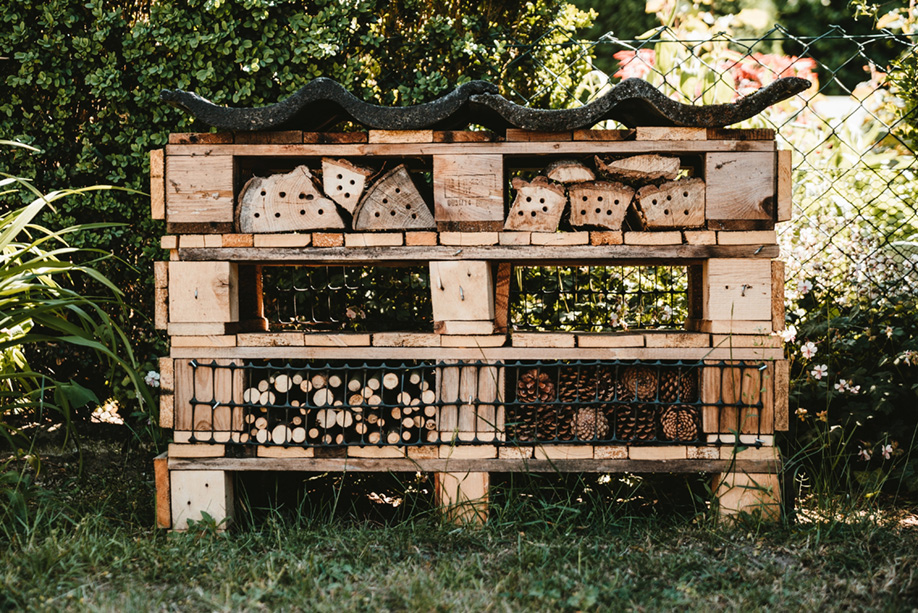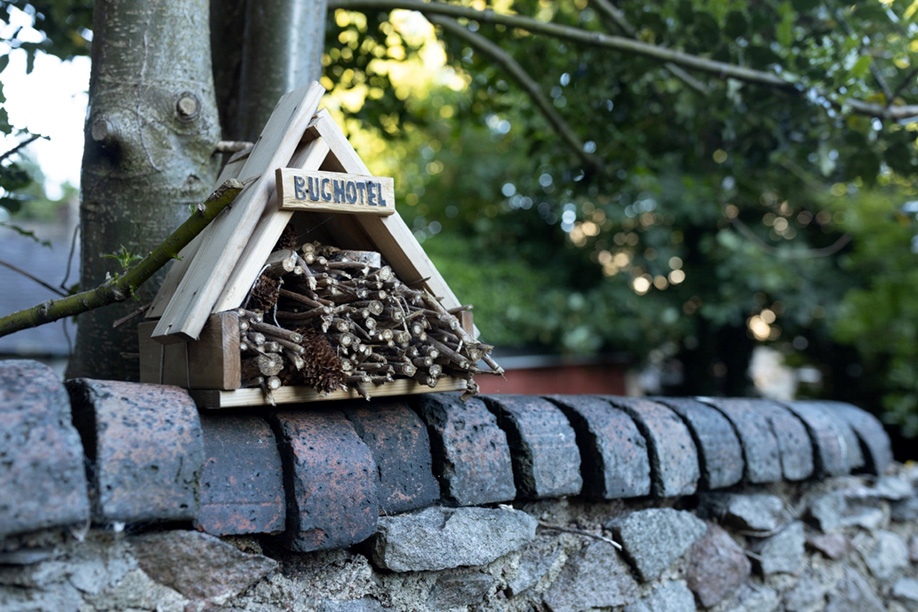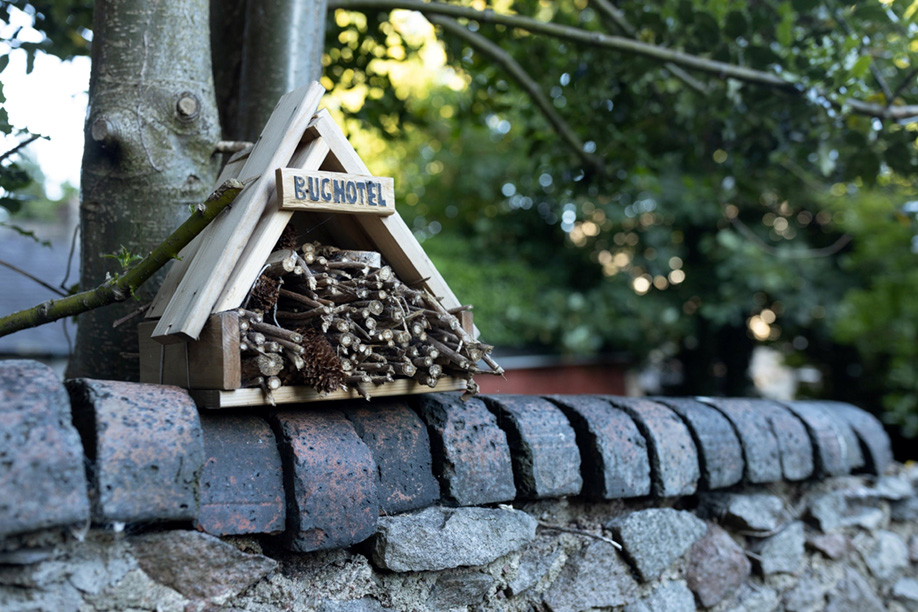
courtesy photo
A bug hotel should include a variety of materials that are arranged in layers or sections inside the box to provide nesting spots for a number of different insects.
by Andrea Knepper, Extension Master Gardener, University of Vermont
BOLTON – Many gardeners find ways to invite beneficial insects into their spaces by planting native pollinator plants, mulching and avoiding pesticide use. Another way to support a healthy beneficial insect community is a bug hotel.
Bug hotels provide a variety of nesting options for insects that we want to see in our gardens, such as solitary bees, wasps, ladybugs, beetles and spiders. Bug hotels also can be attractive pieces of garden decor.
Follow these easy steps to create a bug hotel for your garden during these last few weeks of colder weather. When our insect friends emerge as the weather warms, they will be happy to find a new home to nest and lay eggs.
Start by finding or building a wooden frame for your bug hotel. This should be made out of untreated wood and have a depth of about eight inches. Something the size of a small shoebox is a good size to start with although boxes can be any size. If one side of the box is longer, that can act as an overhang and protect the nesting materials when exposed to the elements.
Our goal in creating the bug hotel is to replicate the natural habitats that these insects search for in nature. Collect materials from around the garden or during a walk in the woods. Or you can order a kit online. Different insects look for different nesting spots, so there should be a variety of materials inside the box that are arranged in layers or sections.
Small pieces of bark and dead wood are attractive to beetles and spiders. Centipedes and millipedes also will enjoy making a home in this layer.

courtesy photo
Bug hotels don’t need to be big to provide a variety of nesting options for bees, ladybugs, spiders and other beneficial garden insects.
Ladybugs like to burrow together in the gaps made by piles of twigs and small sticks. Make sure all the sticks are trimmed so they are even with the depth of the hotel frame.
Hollow, pithy stems make ideal nesting tunnels for wasps and solitary bees. Some common native plants that can provide these are milkweed, blackberries, black-eyed susans and sumac.
Bamboo also can be used for nesting cavities. I sometimes use bamboo in my garden for staking and trellising. After a season or two, the bamboo becomes brittle. Putting it into the bug hotel is a great option to continue to use this.
Another way to provide nesting tunnels for solitary bees and other insects is by drilling holes into small pieces of wood. Different insects look for different-sized cavities. The recommended range is 2 to 10 millimeters in diameter.
Once you have arranged all of your chosen materials in the box, fill any gaps with dry leaves, pieces of straw or small twigs to ensure a tight fit.
Mount or place the bug hotel in a south-facing location at least three feet above the ground. Ideally, the spot you choose will be sheltered, or you can choose a frame that includes an overhang.
To maintain a healthy environment for your residents, you will need to replace materials occasionally. Early summer is a good time for clean-up, as the residents will have moved out to pollinate and protect our gardens.
For more information, check out these resources: go.uvm.edu/bee-support and go.uvm.edu/pollinator-nesting.
[Andrea Knepper is a UVM Extension Master Gardener from Bolton.]







